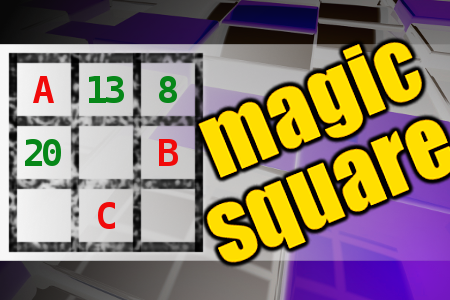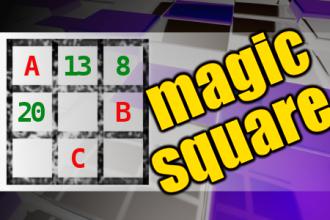MAGIC SQUARE: Calculate A*B+C
The aim is to place the some numbers from the list (1, 2, 3, 4, 8, 10, 12, 13, 14, 20, 32, 44) into the empty squares and squares marked with A, B an C. Sum of each row and column should be equal. All the numbers of the magic square must be different. Find values for A, B, and C. Solution is A*B+C.Correct answers: 2
#brainteasers #math #magicsquare

A man entered the bus with bot...
A man entered the bus with both of his front pants pockets full ofgolf balls, and sat down next to a beautiful (you guessed it) blonde.
The puzzled blonde kept looking at him and his bulging pockets.
Finally, after many such glances from her, he said, "It's golf balls".
Nevertheless, the blonde continued to look at him thoughtfully andfinally, not being able to contain her curiosity any longer, asked."Does it hurt as much as tennis elbow?"
The puzzled blonde kept looking at him and his bulging pockets.
Finally, after many such glances from her, he said, "It's golf balls".
Nevertheless, the blonde continued to look at him thoughtfully andfinally, not being able to contain her curiosity any longer, asked."Does it hurt as much as tennis elbow?"

